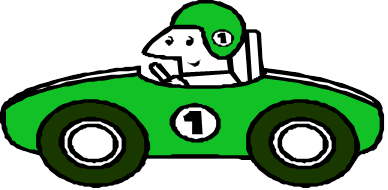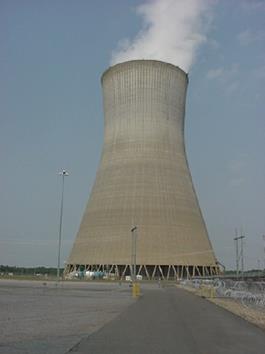
TRANSFORMATION
OF ENERGY, FISSION, FUSION
EXOTHERMIC
& ENDOTHERMIC REACTIONS
Energy is transferred from one form to another through many processes that go on every day in the world around us. Energy can be transferred from chemical to mechanical or to electrical energy but, although energy is transferred, it cannot be created or destroyed except in a nuclear reaction. This is the law of conservation of energy. A car battery is an example of chemical energy. A car motor is started by a battery and, the chemical energy of the battery is transferred to mechanical energy when it causes parts of the car motor to move. Even though batteries will eventual go dead, the energy they once possessed is not lost but, transferred into another form of energy. The motor of the car also transfers energy. As a motor runs, it generates heat, and this heat energy is transferred to the surroundings. As a motor runs it also makes noise which is heard in the environment and is also a form of energy transfer. Energy transfers can be recognized in the form of heat, light, or sound. If any of these forms of energy are observable in our environment, then an energy transfer has taken place.

Cars function on several forms of energy.

They have a battery (chemical) which powers the lights and radio (electrical) and starts the motor (mechanical). Not all of the energy is transferred, which reduces the car’s efficiency. Efficiency is determined by the amount of energy that completes work compared to the amount of energy that does no work. A car motor gets hot and makes noise but, this is energy that does not do work which causes the energy transfer to be less efficient.
Work is the transfer of energy. Work can be calculated from the formula: W=F d Work=force X displacement.
However work is only done when the force and the displacement are in the same direction. When you pick up a book you are doing work. The book moves ↑ and the force you are using to lift the book is going ↑. When you carry the book down the hallway the force remains↑ but the books displacement is→ so they are not in the same direction meaning you are doing no work. When you set the book down, the force’s direction is↓ and the book’s displacement is ↓ so you do work.
For an automobile, heat being created in an energy transfer is not good. This process causes the car to be less efficient and waste gasoline. The creation of heat in an energy transfer is not always a bad thing, however. A reaction that produces heat that is useful is called an exothermic reaction. A heat pack placed on an aching muscle is a beneficial use of an exothermic reaction. Hot packs can be used to keep skiers warm while skiing and are often sold as hand and foot warmers for general use during the winter season. Just as some reactions produce heat, others absorb heat and feel cold to the touch. Reactions that absorb heat and feel cold are called endothermic and can also be useful reactions. Endothermic reactions have prompted the creation of cold packs. Cold packs are widely used by athletic trainers. If an athlete is injured during a sporting event, a cold pack can be very helpful in preventing swelling.
Heat transfers can be beneficial on a large scale as well. An example would be electricity being generated by heat. Electricity is produced by local power plants by the process of burning coal to produce heat. Nuclear power plants use nuclear reactors for the generation of heat to produce electricity. Earlier, we learned that the word nucleus means the center of an atom. A nuclear reaction involves the nucleus in some manner in the two types of nuclear processes.
Fusion reactions involve the combining of two small nuclei into one larger nucleus. The reaction is difficult to produce because it can only take place at temperatures well over 1,000,000 degrees Celsius. Because the temperature is so extreme, it is very difficult to produce a container which can hold it. The second type of nuclear reaction is a fission reaction. Fission reactions involve the splitting of a nucleus into smaller pieces. It is the reaction which is harnessed and used in both nuclear power plants and nuclear bombs. It is imperative to control a fission reaction. When one nucleus splits, the two particles hit two other particles putting four particles in motion that hit four others and so on. If the process is not slowed, a chain reaction occurs which produces extreme heat and a nuclear explosion or nuclear meltdown.
|
|
|
|
Steam rises from the cooling tower at the Shearon Harris Nuclear Power Plant near |
Workers in the control room at the nuclear power plant can keep an eye on the nuclear reactor and take action if something goes wrong. |



